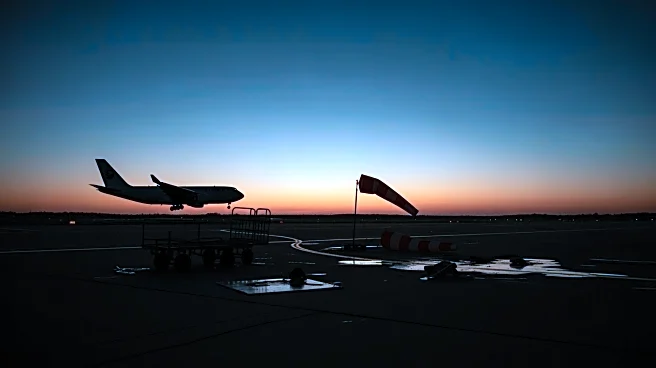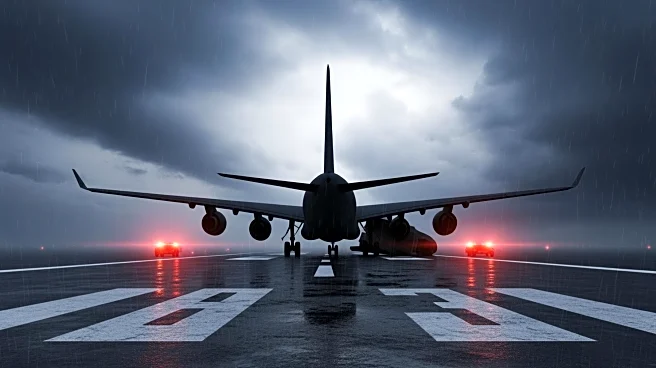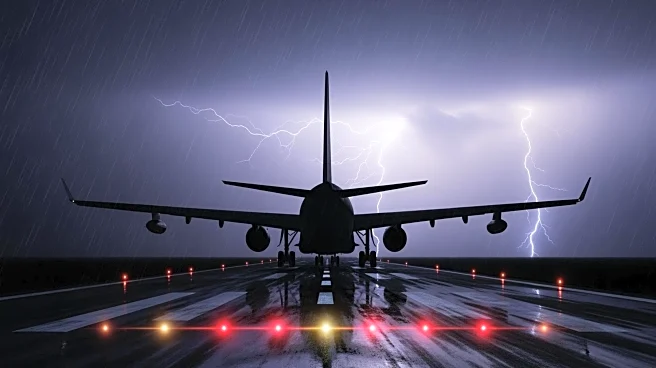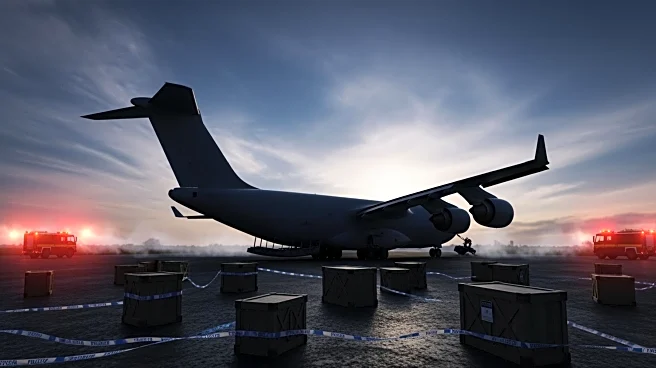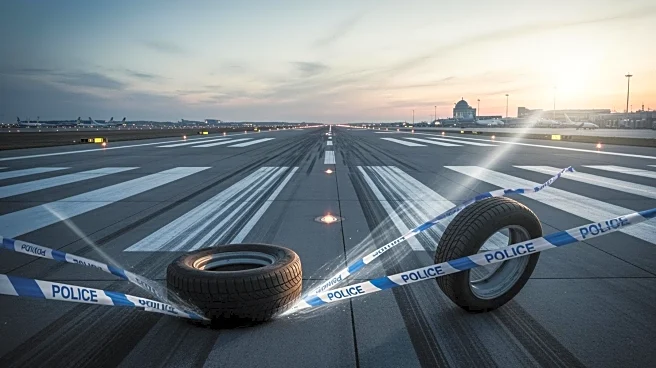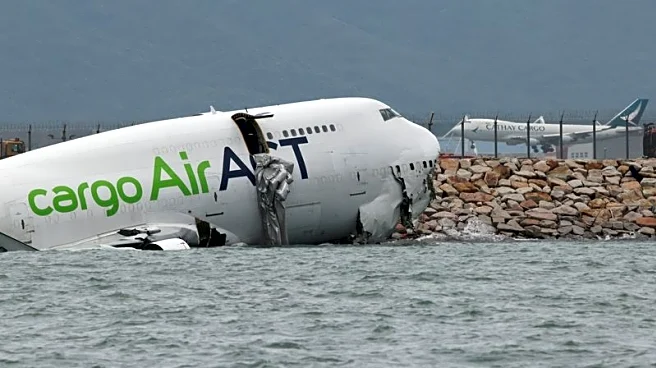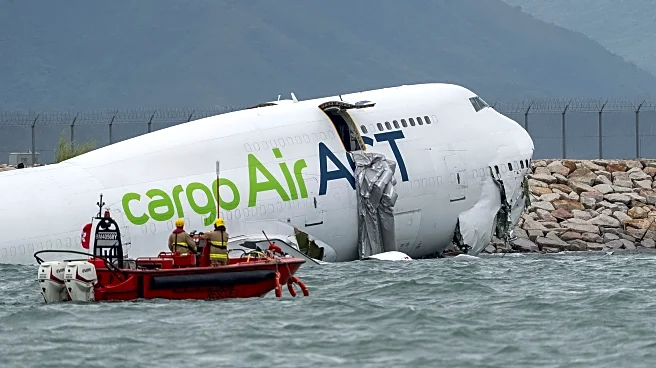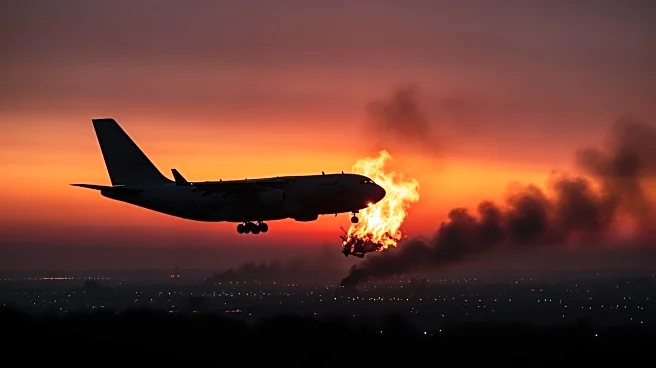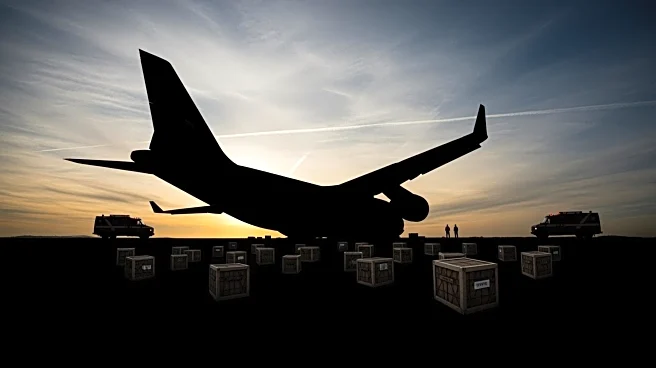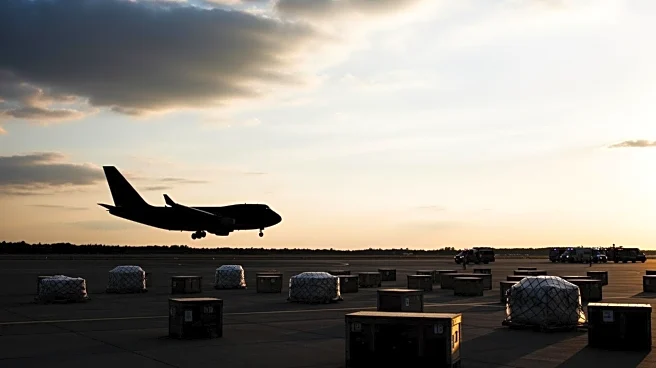What's Happening?
A tragic accident occurred at Hong Kong International Airport when a cargo plane operated by Turkish freight carrier ACT Airlines, on behalf of Emirates, skidded off the runway and collided with a security
patrol vehicle. The incident resulted in the deaths of two airport security staff members. The Boeing 747 aircraft, arriving from Dubai, veered off the runway upon landing, pushing the patrol vehicle into the sea. The four crew members aboard the plane managed to escape without injury. The accident, which took place at approximately 3:50 a.m. local time, is under investigation by authorities who are examining factors such as weather conditions, runway status, and the aircraft's technical state. Despite the severity of the incident, airport operations were not disrupted.
Why It's Important?
This incident highlights the critical importance of airport safety protocols and the potential risks associated with cargo flight operations. As Hong Kong International Airport is one of the world's busiest cargo hubs, the accident underscores the need for stringent safety measures to protect both personnel and infrastructure. The loss of life emphasizes the human cost of aviation accidents and the necessity for thorough investigations to prevent future occurrences. The outcome of the investigation could lead to changes in safety regulations and operational procedures, impacting airlines and airport authorities globally.
What's Next?
Authorities are conducting a detailed investigation to determine the cause of the accident. This includes analyzing the aircraft's flight data, weather conditions at the time of landing, and the actions of both the flight crew and ground personnel. The findings could result in recommendations for improved safety measures and operational changes at Hong Kong International Airport and potentially influence global aviation safety standards. Stakeholders, including airlines and airport operators, will be closely monitoring the investigation's progress and outcomes.
Beyond the Headlines
The incident may prompt a reevaluation of safety protocols for ground vehicles operating near active runways. It also raises questions about the adequacy of current communication systems between air traffic control and ground operations. The accident could lead to technological advancements in runway safety systems and increased investment in training for both flight and ground crews to handle emergency situations more effectively.
